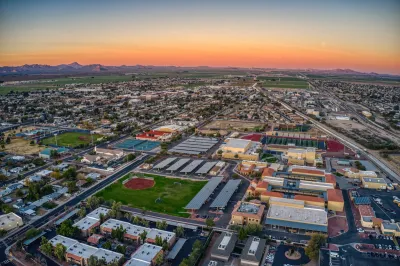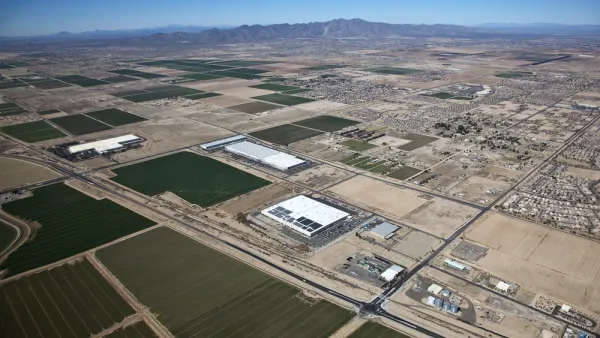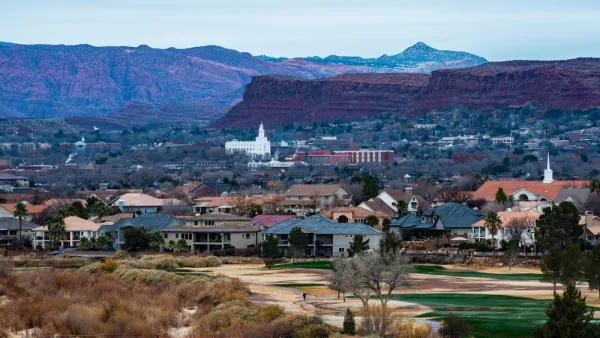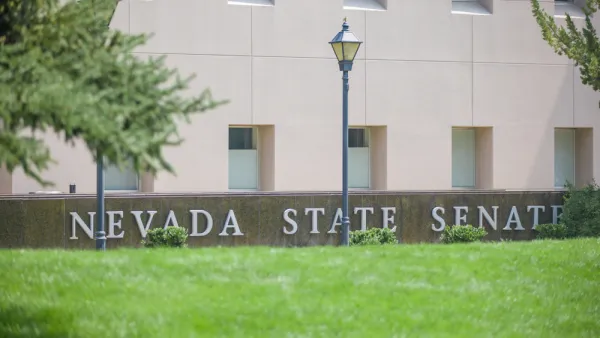While many Southwest cities are looking for ways to conserve water and limit growth as water supplies become strained, one town is pressing ahead with rapid development.

In an article for The Guardian, Oliver Milman describes how a fast-growing Arizona community is looking for new water sources to support its growing population, even as water resources across the Southwest become more strained.
“Buckeye expects to one day contain as many as 1.5 million people, rivaling or even surpassing Phoenix – the sixth largest city in the US, which sits in a county that uses roughly 2bn gallons of water a day – by furthering the tendrils of suburbia, with its neat lawns, snaking roads and large homes, into the baking desert.”
Buckeye has no plans to slow down its growth, with its mayor saying, “Personally, my view is that we are still full steam ahead.” The city is looking at several solutions, including bringing in water from California or Mexico. “Perhaps the most “crazy” of the ideas is the one that would involve building a desalination plant in the Mexican town of Puerto Peñasco, perched on the edge of the Gulf of California, to suck up seawater and then send the treated water in a pipeline several hundred miles north to Arizona.”
The state itself is also considering new water sources. “About a third of the state’s water supply comes from the Colorado River, which has shrunk as temperatures have risen. Last year, under a mechanism where Arizona shares water with other states, its allotment of Colorado River water was cut by 21%.”
Arizona has seen some success when it comes to water conservation: “somehow Arizona uses less water than it did in the 1950s despite now having 500% more people,” Milman writes. But as conditions become hotter and drier, the past pay not be a good indicator for the future. “Arizona may be able to move the sea from Mexico, but somehow out-engineering the climate crisis in the longer term will be an even more grueling feat.”
FULL STORY: Pipeline dreams: the desert city out to surpass Phoenix by importing water

National Parks Layoffs Will Cause Communities to Lose Billions
Thousands of essential park workers were laid off this week, just before the busy spring break season.

Retro-silient?: America’s First “Eco-burb,” The Woodlands Turns 50
A master-planned community north of Houston offers lessons on green infrastructure and resilient design, but falls short of its founder’s lofty affordability and walkability goals.

Delivering for America Plan Will Downgrade Mail Service in at Least 49.5 Percent of Zip Codes
Republican and Democrat lawmakers criticize the plan for its disproportionate negative impact on rural communities.

Test News Post 1
This is a summary

Test News Headline 46
Test for the image on the front page.

Balancing Bombs and Butterflies: How the National Guard Protects a Rare Species
The National Guard at Fort Indiantown Gap uses GIS technology and land management strategies to balance military training with conservation efforts, ensuring the survival of the rare eastern regal fritillary butterfly.
Urban Design for Planners 1: Software Tools
This six-course series explores essential urban design concepts using open source software and equips planners with the tools they need to participate fully in the urban design process.
Planning for Universal Design
Learn the tools for implementing Universal Design in planning regulations.
EMC Planning Group, Inc.
Planetizen
Planetizen
Mpact (formerly Rail~Volution)
Great Falls Development Authority, Inc.
HUDs Office of Policy Development and Research
NYU Wagner Graduate School of Public Service





























